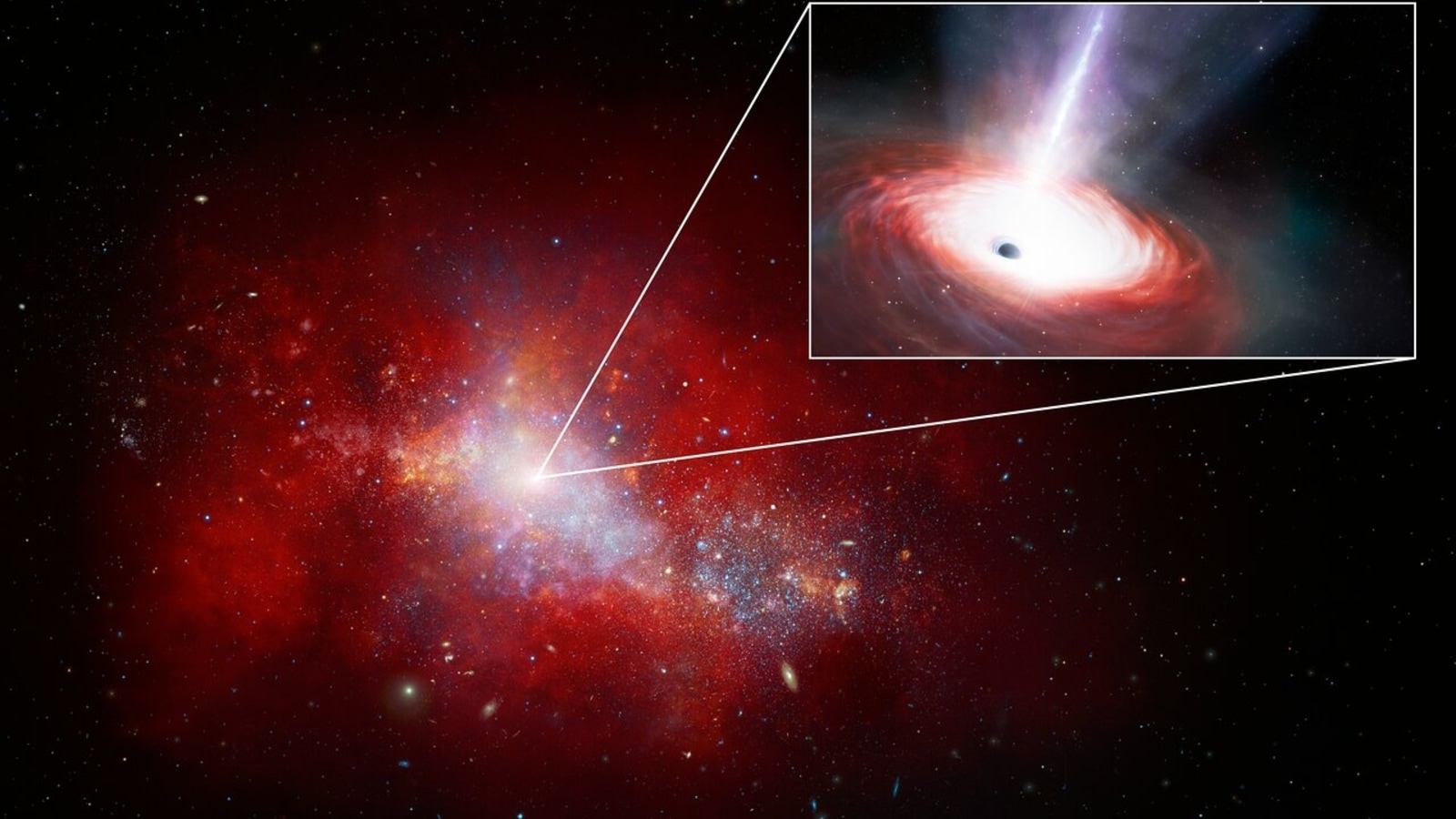
A black hole named LID 568 has been observed consuming matter at a speed 40 times greater than previously thought possible. (NOIRLab) 1/5 A black hole named LID 568 has been observed consuming matter at a speed 40 times greater than previously thought possible. (NOIRLab) Interestingly, LID 568 has surpassed the Eddington Limit—the rate at which an object can consume matter and emit light in the universe.
This discovery was made using NASA's James Webb Space Telescope. This finding is quite shocking, as it was previously deemed impossible for a black hole to exceed this limit. (Unsplash) 2/5 Interestingly, LID 568 has surpassed the Eddington Limit—the rate at which an object can consume matter and emit light in the universe.
This discovery was made using NASA's James Webb Space Telescope. This finding is quite shocking, as it was previously deemed impossible for a black hole to exceed this limit. (Unsplash) The discovery provides new insights, helping scientists understand why black holes, particularly massive ones, existed so early in the universe’s formation.
It offers one possible explanation for the presence of such large black holes in the early universe. This discovery was achieved by researchers at NOIRLab. (NASA) 3/5 The discovery provides new insights, helping scientists understand why black holes, particularly massive ones, existed so early in the universe’s formation.
It offers one possible explanation for the presence of such large black holes in the early universe. This discovery was achieved by researchers at NOIRLab. (NASA) What Are Black Holes? Simply put, a black hole is a region in spacetime where gravity is so intense that not even light can escape.
Black holes are incredibly dense objects surrounded by a boundary known as the event horizon. The event horizon isn’t a solid surface like a planet’s; rather, it consists of all the matter that the black hole has drawn in. (NASA) 4/5 What Are Black Holes? Simply put, a black hole is a region in spacetime where gravity is so intense that not even light can escape.
Black holes are incredibly dense objects surrounded by a boundary known as the event horizon. The event horizon isn’t a solid surface like a planet’s; rather, it consists of all the matter that the black hole has drawn in. (NASA) Based on scientific research, black holes can be formed in several ways, though one of the most widely accepted theories is that they form when a massive star undergoes a supernova explosion.
(Pixabay) 5/5 Based on scientific research, black holes can be formed in several ways, though one of the most widely accepted theories is that they form when a massive star undergoes a supernova explosion. (Pixabay).














